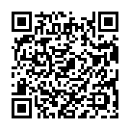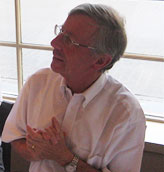What makes a good manuscript, tips for ESL authors, and more!
Belgian astronomer, Christiaan Sterken, holds an MSc in Mathematics (University of Ghent), a PhD in Astronomy (University of Brussels), a Habilitation degree (University of Liege), and is Guest Professor at Department of Physics, University of Brussels, where he currently teaches History of Natural Sciences. He held the Sarton Chair of History of Science at the University of Ghent in 2006-2007, and is an Erskine Fellow holder at the University of Canterbury, Christchurch, New Zealand in 2014. He is Emeritus Research Director at the Belgian Fund for Scientific Research.
Author of more than 200 highly cited scientific papers (Scopus), author of two monographs, and editor/co-editor for about two dozen books, Dr. Sterken has extensive editorial experience. Also, he founded the Editorial Board of the Information Bulletin for Variable Stars and served as its President (1991-1997); he established the Scientific Writing for Young Astronomers School (2008); and he was the Vice-Chairperson of the Board of Directors of the journal Astronomy and Astrophysics. Dr. Sterken is the co-founder and Editor ofThe Journal of Astronomical Data, an Open-Access on-line astronomical journal. He is currently a member of the European Association of Science Editors (EASE) Council. His native language is Dutch and he is fluent in English, French, German, and Spanish.
What led to the foundation of the Scientific Writing for Young Astronomers School? Why did you feel the necessity of conducting such a course?
In 2005, I co-edited the Proceedings of a workshop for PhD students, and I was appalled by the poor quality of some of the submitted manuscripts. I published a short paper entitled Advice on Writing a Scientific Paper, which was voted by the students as "the most useful paper" of the meeting. This led to the organisation of the first and second of a series of scientific writing schools.
Given your experience as an editor for over 20 years and a regular author of high quality papers—your PhD paper (Light variations of extreme galactic B- and A supergiants) of 38 years ago is still cited today—can you tell us what you think are the characteristics of a good manuscript? In other words, what makes a manuscript publication worthy?
A good manuscript, first of all, should present new – thus not previously published – results, and should be well written, i.e., it should have a fluent narrative, be concise and at the same time complete, have good graphics, and also be correct in the citing of work of other scientists. Needless to say, a manuscript with typographical errors never is a good manuscript.
As you know, members of the scientific community are always under pressure to publish. You have been on the Editorial Board of several international journals. Can you give us a view as an editor of the concerns or pressures you face every day?
The main pressure is time pressure: authors want their manuscripts published as soon as possible after acceptance. But every stage of the publishing process takes time: identifying referees, checking their reports, verifying the author’s revised manuscript, organising a second refereeing round if necessary, etc.
The peer review process is one of the cornerstones of academic publishing. Most of us have an idea about how the system works. However, as an editor, what are some of the complications in the peer review process that you have to deal with?
The peer review process is a quality-control method that relies on the evaluation of the submitted manuscript by one or more external experts (mostly anonymous). It should be well understood that the final decision is made by the Editor, and that the referee’s role, in principle, is advisory only. Referees are helpful in detecting errors of all kinds, and quite often provide valuable suggestions to improve the manuscript. The typical problems that arise from time to time are finding a good referee, because scientific colleagues are all under time pressure, and sometimes they are not able to produce a referee report in due time. Another problem that arises from time to time, is “conflict of interest” when a referee happens to be a direct competitor. Anyway, refereed papers are, in general, of higher quality than non-refereed papers.
How do journal editors typically become aware of potential “conflict of interest” between referees and authors and handle such scenarios?
Conflict of interest is not easy to detect. Sometimes pungent language in the referee report may hint at a possible conflict of interest. Another symptom can be excessively long reviewing times. The best way to know is to consult a bibliometric database: if the referee and the author share many papers, then the Editor must look out. Many journals ask referees to sign a declaration that there is no conflict of interest involved. I have myself turned down at least a dozen invitations to referee just to avoid the problem.
As an editor, you must be passionate about publishing ethically. However, you would definitely agree that there is a fine line between purposeful breach of ethics and unintentional error. How does a journal identify instances of author misconduct?
Author misconduct occurs in many forms: for example, plagiarism, or submitting the same manuscript to several journals at the same time. Fortunately, plagiarism-detection software today is so powerful that we can easily identify those ethical breaches. And, quite often, the referee also detects plagiarism.
What is your take on English being the preferred language for scientific communication?
English is now the lingua franca in scientific communication, and the advantages of using one global language are greater than the disadvantages of using multiple languages. There are two reasons why publishing in English is necessary:
- many more people can read your paper than would be the case if you publish in your own language, and
- the pool of referees becomes larger.
There are disadvantages too of course: non-native English speaking people have to learn to write in a foreign language, and that learning process takes time. Another aspect is that the English used in scientific communication is not standardised: there are many variants of English (there are also differences between UK and US English), to which is added the local jargon of the specific scientific discipline.
The main-belt asteroid 10968 Sterken (4393 T-1), we believe, has been named after you. Could you throw some light on how that came to be?
In between the orbits of Mars and Jupiter are hundreds of thousands minor planets. There is a tradition among astronomers that the discoverer of an asteroid has the right to give it a name. As such, thousands of planets have received the name of a person – sometimes a colleague, but quite often a painter, writer, musician or composer – or of a city. Several years ago, my Dutch colleague Ingrid van Houten-Groeneveld (whom I never met) nominated me for naming the main-belt asteroid 10968. Orbital information and a JAVA-powered orbit diagram is available at
Jet Propulsion Laboratory's site.
For astronomy enthusiasts and others who are curious about your field of study, could you share some developments that you are most excited about in your main field of interest—photometry of variable stars and comets?
The very efficient modern imaging detectors produce a huge harvest of new data, especially from space observatories like the Hubble Telescope. One of the fascinating aspects of these new data is that many of them can be combined with data collected decades ago. That means that older data of good quality now can serve modern analysis in ways that the observer never could have dreamt of. A telling example is exactly the case with Dr. van Houten-Groeneveld, mentioned above: after her husband Kees van Houten passed away, she prepared the observations that he had collected from 1965 till 1978 in South Africa, and published a data paper that will be very useful for future investigations see,
V BLUW Photometry of 13 Eclipsing Binary Stars.
A word of advice for authors…
- Never write a manuscript in your mother language, and then translate it: the proper method is to write directly in English, and correct the syntax afterwards.
- Use a spell checker.
- Proofread your manuscript several times before submission, and ask a befriended colleague to read your paper(s) and vice versa.
Contributors

 火星和木星軌道之間有成千上萬的小行星。天文學家之間有一個傳統,即小行星的發現者有給其命名的權利,因此,數以千計的行星都是以同一個人或一座城市的名字命名。前者有時是天文學同儕,但大多數是畫家、作家、音樂家或作曲家。幾年前,與我素未謀面的荷蘭同事Ingrid van Houten-Groeneveld 提議把主帶小行星10968 以我的名字命名。其軌道資料和以Java程式語言驅動的軌道圖可在噴氣推進實驗室的網站上找到。
火星和木星軌道之間有成千上萬的小行星。天文學家之間有一個傳統,即小行星的發現者有給其命名的權利,因此,數以千計的行星都是以同一個人或一座城市的名字命名。前者有時是天文學同儕,但大多數是畫家、作家、音樂家或作曲家。幾年前,與我素未謀面的荷蘭同事Ingrid van Houten-Groeneveld 提議把主帶小行星10968 以我的名字命名。其軌道資料和以Java程式語言驅動的軌道圖可在噴氣推進實驗室的網站上找到。